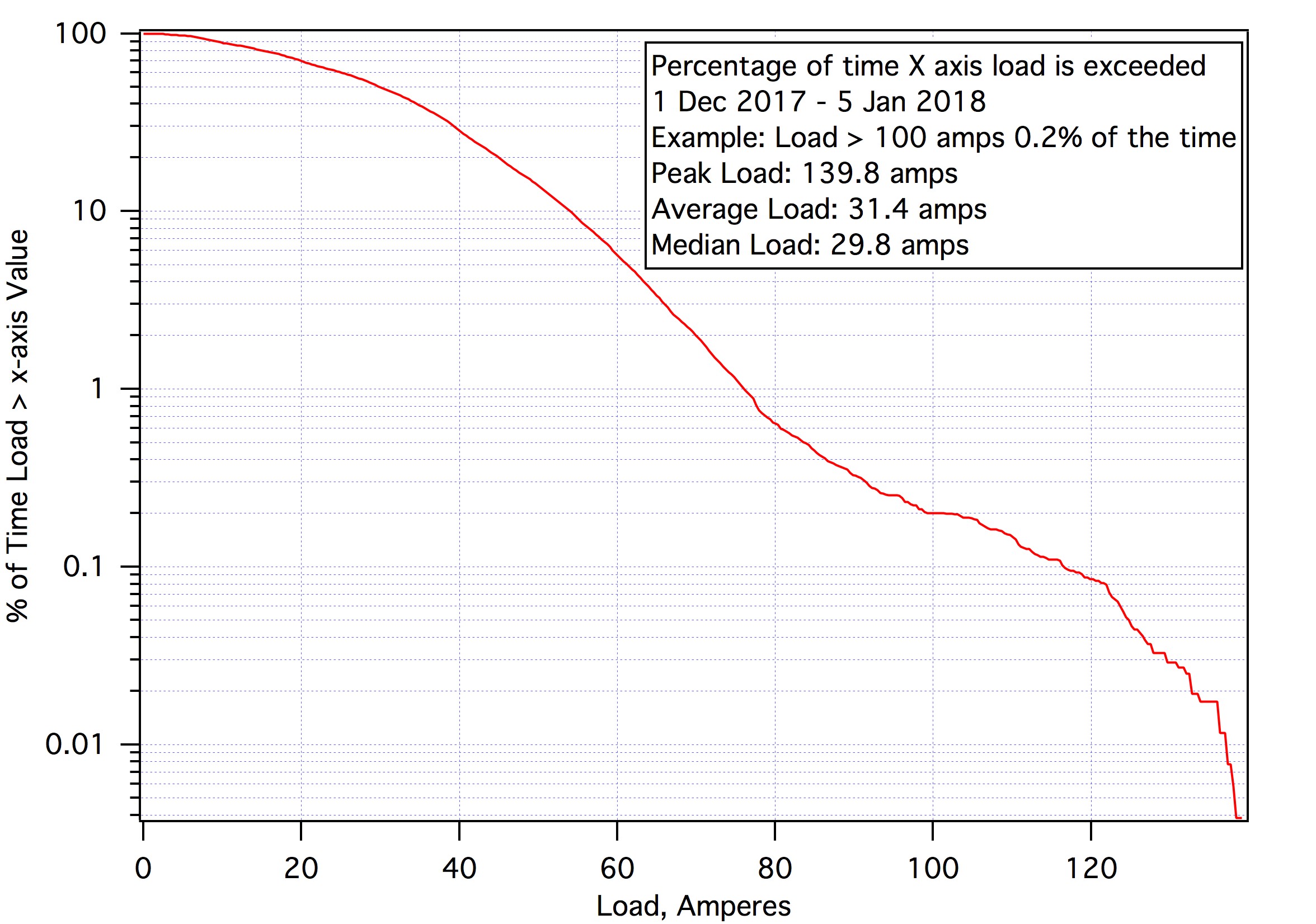It is very enlightening when you can look at historical data. From what you have presented, you would never have tripped a 200A main.
In the normal operation of the house in the time period for which I have records I did not exceed 200 A. But it is also clear that on a cold night where the A/A heatpumps switch over to E-heat and both compressors in the W/W heat pump are running simultaneously 48% of the time if my wife has got something in the ovens, my son is doing laundry and I've left lights on in the brewery and garage, I'm going to go over 200 Amps.
IMO, you should have a 200A service.
The most important aspect of this discussion to me is that your opinion is not shared by the NFPA nor, consequently, the building inspector, my insurance company, or my electrician. Nor do I share it. Given that service comes in chunks of 200A it is clear that 400A service is right for me. Now when I installed a generator last spring the same question came up: how big should it be and how big should the transfer switch be. My electrician (a good one - he listens to his customers) looked at my panels stuffed with probably, at that time, around 2200 - 2300 (it's 2565 now) phase amps worth of breakers, divided by 4 and concluded I had 600 amp service. I showed him load data but he wasn't really convinced until I sent him a photo of the service entrance with two fat CT's labeled 400 in big letters. 600 would be overkill. To draw more than 600 amperes every breaker in the house would have to be loaded to near its label capacity. The highest load I have observed represents 12% loading per pole relative to the rated breaker size and a 400 amp load would represent 31%. That's plenty of margin for the way I use electricity.
Sure, there is potential to overload with any service. What would be the penalty if an overload happened? ...reset the main breaker.
In my case the penalty would be going out into the freezing cold to replace two of these puppies in the main disconnect.
A big PITA. If I'm not here it would mean my spouse sitting in the dark and cold until I got home. I'm getting old enough that I have to recognize that the time when I'm going away and not coming home is not so far off as it used to be. After that, it means my wife sitting in the dark and cold waiting for the electrician to come. BTW, if the main disconnect had breakers rather than fuses it would be the same. My wife would have no clue as to what to do.
It's such an unlikely event to overload with no real penalty. The almost negligible chance of an overload does not justify the extra cost of an oversized service IMO.
Well, that's your opinion. I just wouldn't be comfortable based on what I have installed in this house (not typical by any means) and what the data I've collected tell me with 200A service. I'd have no room for expansion. And the potential penalties are indeed greater than you seem to think. The mjor one you missed is that if I presented a 200 amp service for inspection after the work I did last spring I would have failed and would require rework to get up to 400A service. That would cost me a lot of bucks, no doubt.
But now on to the fun part. Can I use a month of data in which I didn't see load over 200 amps to predict how many minutes in a year I might see over 200 amps? We, sure I can but I can't say how good the prediction is until I have a year's worth of data. The way I did it is illustrated in the graph below. The solid red curve shows, on the left axis, the number of minutes in a year for which the load would be, based on the distribution of loads in December, above the load shown on the x-axis. The dotted curve is the Weibull distribution that best fits the December distribution.

You can draw your own conclusions. You would probably argue that at one minute a year it is not significant and might even reason that a breaker might not trip under load exceeding its rating for a minute or less. I'd reply that yes, that may be true but years of engineering practice have taught me that when one is this close to the limit it is best to 'err' on the safe side. The peace of mind is well worth the money.




















![Craft A Brew - Safale BE-256 Yeast - Fermentis - Belgian Ale Dry Yeast - For Belgian & Strong Ales - Ingredients for Home Brewing - Beer Making Supplies - [3 Pack]](https://m.media-amazon.com/images/I/51bcKEwQmWL._SL500_.jpg)










































